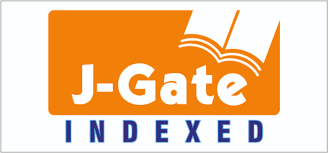EVALUATING THE ELECTRONIC GOVERNMENT IMPLEMENTATION IN THE KURDISTAN REGION OF IRAQ FROM CITIZENS' PERSPECTIVE
DOI:
https://doi.org/10.26436/hjuoz.2022.10.2.928Keywords:
E-government, E-services, Bureaucracy, Transparency, Biometric system, Maturity modelAbstract
The rapid development of technology affected how people think, interact, and do business and led governments in many countries to change how they interact with their citizens. The development of information and communication technologies increased citizens' need for more transparent governments with less bureaucracy and routines. In addition, citizens need to be the center of the government decisions that affect their lives. Since 2007, the Kurdistan regional government announced strong e-government based on technology, changing traditional governance to e-governance and e-services, reducing bureaucracy, and tackling corruption. Although the e-government in KRI is still at the beginning, this quantitative article aims to assess the advancement of e-government in the Kurdistan regional government by utilizing one of the maturity models, the Layne and Lee model, and determining the e-government process's maturity level. For the first and second levels of evaluation, this research will analyze the citizen's perspectives and opinions through analyzing the data obtained from a questionnaire prepared for this purpose. The evaluation analysis results show that the process is prolonged, and most people are not familiar with the e-services and do not expect more progress in this area shortly.
Downloads
References
Abdulla, Hedi Mustafa, and Karwan Hushyar Sherwani. 2017. “A Swot Analysis of Readiness for E-Government: As a Case of Kurdistan Regional Government.” International Journal of Social Sciences & Educational Studies 3(4): 66–72.
Adam, Ibrahim Osman. 2020. “Examining E-Government Development Effects on Corruption in Africa: The Mediating Effects of ICT Development and Institutional Quality.” Technology in Society 61(February): 101245.
Adeshara, Priti, Radmila Juric, Jasna Kuljis, and Ray Paul. 2004. “A Survey of Acceptance of E-Government Services in the UK.” Journal of Computing and Information Technology 12(2): 143–50.
Ahmad, Irshad. 2016. “Questionnaire Development for Public Value of E-Government in India.” 1(1): 1–36.
Al-Jaghoub, Saheer, Mouath Al-Hourani, and Hussein Al-Yaseen. 2009. “Awareness and Acceptability Evaluation of Using E-Government Services in Developing Countries: The Case of Jordan.” Proceedings of the 3rd European Conference on Information Management and Evaluation, ECIME 2009 13(1): 10–17.
Al-Kaseasbeh, Hazem Mohammad, Yoshifumi Harada, Ummi Naiemah, and Binti Saraih. 2019. “E-Government Services Assessment from the Perspective of Citizens Interaction and Satisfaction in Jordan: Pilot Study.” International Journal of Research & Review (www.ijrrjournal.com) Vol 6(December): 12.
Alotaibi, Raed, Kuldeep Sandhu, and Luke Houghton. 2014. “A Study of Service Users ’ Attitudes towards E-Government Initiatives in the Kingdom Of Saudi Arabia.” International Journal of Computer Science and Information Technologie 5(6): 6892–6901.
Alqaralleh, Bassam A.Y., Ahmad H. Al-Omari, and Malek Zakarya Alksasbeh. 2020. “An Integrated Conceptual Model for M-Government Acceptance in Developing Countries: The Case Study of Jordan.” International Journal of Interactive Mobile Technologies 14(6): 115–36.
Andersen, Kim Viborg, and Helle Zinner Henriksen. 2006. “E-Government Maturity Models: Extension of the Layne and Lee Model.” Government Information Quarterly 23(2): 236–48.
Berzinji, Ala, and Razee Jamal. 2018. “Replacing Traditional Paper Based System With E-Government Services in Kurdistan Region.” (January): 268–81.
Bournaris, Thomas. 2020. “Evaluation of E-Government Web Portals: The Case of Agricultural e-Government Services in Greece.” Agronomy 10(7).
Fath-allah, Abdoullah, Laila Cheikhi, Rafa E Al-qutaish, and Ali Idri. 2014. “E-G Overnment M Aturity M Odels :” International Journal of Software Engineering & Aplication 5(3): 71–91.
Ghareb, Mazen Ismaeel. 2016. “He Challenges of National E-ID for Kurdistan Region Government for Multi-Purposes.” International Journal Of Engineering And Computer Science (October 2015).
Government, Kurdistan Regional. “Public Disclosure Authorized Kurdistan Region of Iraq Reforming the Economy for Shared Prosperity and Protecting the Vulnerable Kurdistan Region of Iraq Reforming the Economy for Shared Prosperity and Protecting the Vulnerable.”
Hassan, Bryar A., Aram M. Ahmed, Soran A. Saeed, and Awin A. Saeed. 2016. “Evaluating E-Government Services in Kurdistan Institution for Strategic Studies and Scientific Research Using the EGOVSAT Model.” Kurdistan Journal of Applied Research 1(2): 1–7.
Hussain, Azham et al. 2019. “An Interview Report on Users’ Perception about the Usability Performance of a Mobile e-Government Application.” International Journal of Interactive Mobile Technologies 13(10): 169–78.
Joshi, Pusp Raj, and Shareeful Islam. 2018. “E-Government Maturity Model for Sustainable E-Government Services from the Perspective of Developing Countries.” Sustainability (Switzerland) 10(6).
Karen Layne, Jungwoo Lee. 2010. “Six Sigma DMAIC Quick Reference.” Government Information Quarterly 18(2): 1–6.
KRG. “Khizmat Services of KRG.” https://services.gov.krd/ (July 16, 2021a).
———. “Kurdistan Regional Government Agenda.” https://gov.krd/english/government/agenda/ (July 16, 2021b).
Lee, Lilian et al. 2022. “Investigating the Usability of Universities ’ Websites : Upgrading Visualization Preference and System Performance.” 16(02): 129–43.
Long, Qingqi, and Ke Song. 2021. “Operational Performance Evaluation of E-Government Microblogs Under Emergencies Based on a DEA Method.” Information Systems Frontiers.
M., Bakhtiar, Rebwar M., and Sardasht M. 2016. “An Investigation in IT Projects Failure within Kurdistan Regional Government of Iraq.” International Journal of Computer Applications 133(2): 33–39.
Ministry of Higher Education. “Ministry of Higher Education and Scientific Research.” https://mhe-equalization.com/ (July 16, 2021a).
Ministry of Higher Education. “وەزارەتی خوێندنی باڵا و توێژینەوەی زانستی.” https://www.mhe-studentaffairs.com/student/index.php (July 16, 2021b).
Ministry of Interior. “Electronic Fuel System.” https://gov.krd/moi/services/سیستمی-سووتەمەنی-ئەلیکترۆنی/ (July 16, 2021a).
Ministry of Interior. “Erbil Traffic Office.” https://hawlertp.com/fine_reuiqred_info_page (July 16, 2021b).
Ministry of Interior.. “The Kurdistan E-Residency System.” https://gov.krd/moi/services/نشینگەی-ئەلیکترۆنی-کوردستان/ (July 16, 2021c).
Ministry of Justice. “Region Legislation Database.” https://www.yasaii.info/index.php?lang=ku (July 16, 2021).
Ministry or Interior. “KRG EVISA PORTAL.” https://evisa.moi.gov.krd/ (July 16, 2021).
Nam, Taewoo. 2018. “Examining the Anti-Corruption Effect of e-Government and the Moderating Effect of National Culture: A Cross-Country Study.” Government Information Quarterly 35(2): 273–82.
Nations, United. 2018. E-Government Survey 2018_FINAL.Pdf.
Park, Chul Hyun, and Koomin Kim. 2020. “E-Government as an Anti-Corruption Tool: Panel Data Analysis across Countries.” International Review of Administrative Sciences 86(4): 691–707.
Qader, Shko M., Bryar A. Hassan, and Miran Hama Rahim Saeed. 2017. “A New ICT Framework to Adopt ICT Projects: KRG Organisations as Case Study.” Kurdistan Journal of Applied Research 2(3): 18–24.
Shareef, Shareef M., and Hazha Saeed Yahia. 2018. “Analysis of the Technology Acceptance Model in Evaluating Students’ Perspective towards the Use of Zankoline System.” Qalaai Zanist Scientific Journal 3(3).
Shareef, Shareef, Elias Pimenidis, Johnnes Arreymbi, and Hamid Jahankhani. 2010. “Vision of Electronic Government Implementation in the Kurdistan Region of Iraq.” Proceedings of the European Conference on e-Government, ECEG (June): 575–84.
Shareef, SM. 2012. “E-Government Stage Model: Based on Citizen-Centric Approach in Regional Government in Developing Countries.” International Journal of Electronic Commerce Studies 3(3): 145–64.
Shim, Dong Chul, and Tae Ho Eom. 2008. “E-Government and Anti-Corruption: Empirical Analysis of International Data.” International Journal of Public Administration 31(3): 298–316.
World Bank. 2002. “The E-Government Hanbook for Developing Nations Advisory Board.” (November): 41.
Yu, Chun, and Paul Jen Hwa Hu. 2007. “Examining the Impacts of Institutional Framework on E-Government Infrastructures: A Study of Hong Kong Experiences.” Proceedings of the Annual Hawaii International Conference on System Sciences: 1–10.
Zautashvili, David. 2018. “E-Government Maturity Model by Growth Level of E-Services Delivery.” Journal of Technical Science and Technologies 6(2): 17–22.
Downloads
Published
How to Cite
Issue
Section
License
Authors who publish with this journal agree to the following terms:
- Authors retain copyright and grant the journal right of first publication with the work simultaneously licensed under a Creative Commons Attribution License [CC BY-NC-SA 4.0] that allows others to share the work with an acknowledgment of the work's authorship and initial publication in this journal.
- Authors are able to enter into separate, additional contractual arrangements for the non-exclusive distribution of the journal's published version of the work, with an acknowledgment of its initial publication in this journal.
- Authors are permitted and encouraged to post their work online.

















